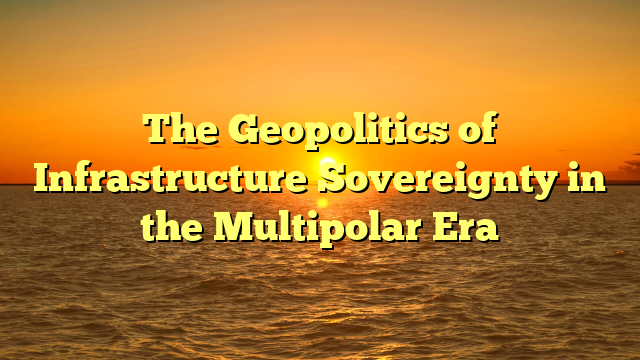Infrastructure has always been a cornerstone of national power, but in the 2020s, infrastructure sovereignty has emerged as a critical instrument of geopolitical Pokemon787 login influence. Beyond roads, ports, and energy grids, infrastructure now encompasses digital networks, data centers, and critical industrial hubs. States capable of controlling and exporting sovereign infrastructure gain long-term leverage over allies, partners, and even competitors, embedding structural influence across the global system.
China’s Belt & Road Initiative exemplifies this strategic approach. Beyond conventional transport projects, China is constructing ports, railways, fiber-optic networks, and energy corridors that integrate partner nations into its operational ecosystem. Each project functions not only as economic stimulus but also as a vector of structural influence, aligning recipient states with Chinese technical standards, operational procedures, and industrial practices. Over time, these infrastructures create dependencies that extend Beijing’s geopolitical reach without direct confrontation.
The United States relies on a different approach: coalition-centered infrastructure strategy. Through development finance, military basing agreements, and multilateral partnership programs, Washington ensures that allied infrastructure is compatible with U.S. operational and technological standards. This networked approach reinforces strategic alignment while providing allies with economic and technological benefits. Critical infrastructure partnerships, particularly in the Indo-Pacific, serve as a lever of influence, balancing against China’s expanding footprint.
Europe, constrained by fiscal and political heterogeneity, emphasizes regulatory and standards-based leverage. Through EU-funded projects, digital infrastructure programs, and energy network integration, Brussels extends normative authority over infrastructure deployment. The EU’s approach is indirect but effective: nations adhering to European standards gain access to markets, funding, and technological cooperation, while non-alignment imposes friction in industrial and digital integration.
Emerging economies increasingly recognize the strategic value of infrastructure sovereignty. Countries in Africa, Southeast Asia, and Latin America face a choice: align with major power infrastructure models or attempt independent development. Alignment can provide immediate capital and technology, but may create long-term structural dependency. Independent development ensures autonomy but often lacks scale and technical capacity. This strategic balancing act is central to the modern geopolitical calculus.
Infrastructure sovereignty extends beyond economics into digital and industrial domains. Control over undersea cables, data centers, smart grid technologies, and advanced manufacturing hubs translates into operational leverage. States with dominant infrastructure can influence industrial flows, energy distribution, and digital connectivity across regions. Conversely, nations dependent on external infrastructure face structural constraints in policy autonomy, strategic mobility, and industrial competitiveness.
The strategic lesson is clear: infrastructure is no longer merely functional; it is geopolitical capital. States capable of building, exporting, and controlling critical infrastructure effectively define the operational environment for allies and competitors alike. Those who fail to secure infrastructure sovereignty risk systemic dependency and reduced influence in the global order.
In sum, multipolar geopolitics in the 21st century increasingly revolves around infrastructure sovereignty. Nations that successfully integrate economic, industrial, and digital infrastructures into their strategic framework will acquire long-term structural leverage, shaping the global system in ways that are both subtle and durable, ensuring influence far beyond conventional military or diplomatic tools.
